Raspberry pruning scheme according to Sobolev
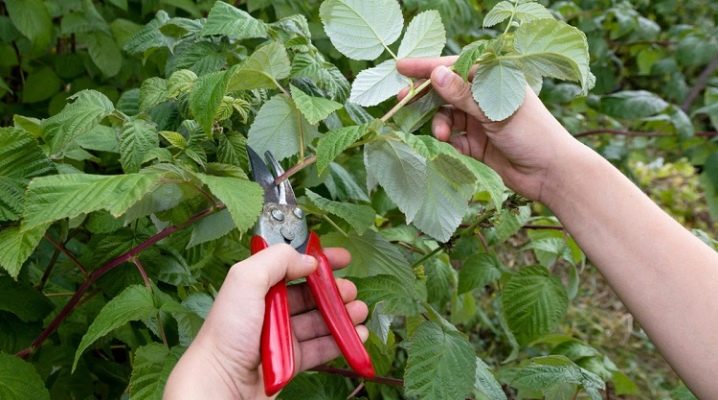
With the correct pruning of raspberries, their yield increases. The bushes grow rather quickly, occupying more and more space around them. This leads to the fact that fruiting begins to decline.
To get a larger yield and prevent raspberry overgrowth, you can use the Sobolev pruning method.
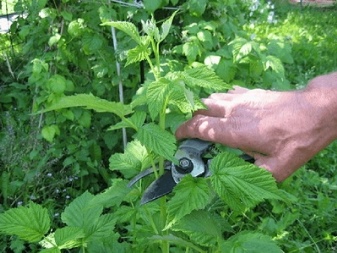
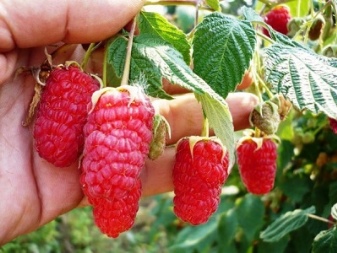
Description of the method, pros and cons
The gardener and scientist Sobolev AG is known as "Raspberry Michurin", who conducted numerous tests on his site. He developed a technique for pruning raspberry bushes, which significantly increases the volume of fruits harvested. The public became aware of its discovery in the 1980s. Raspberry pruning according to Sobolev makes it possible to get 130-135 kilograms of raspberries from 5 acres.
This pruning is effective because it is based on the crop's natural cycle. Raspberry shoots fully develop in two years. So, in the first, there is an active growth of the bushes, and in the second, they begin to bear fruit. The next year, the fruitful branches turn into barren ones, but they do not die off. It is important to remove such shoots in order to avoid trouble in the raspberry tree.
In particular, this prevents the formation of dense thickets. Moreover, young shoots may suffer from a lack of nutrition, since the main part of the substances useful for the plant will be absorbed by the old shoots. Thickened plantings become an ideal place in which diseases develop and various harmful insects multiply. Also, on uncut bushes, you can observe the crushing of fruits, and then a decrease in the volume of the harvest.
Pruning bushes using the Sobolev method implies that branches that have ceased to bear fruit will be removed, and new ones will grow more actively. The author of the technique proposed cutting the bushes twice.
- First, you need to cut off the top on annual branches, the height of which exceeds 70 centimeters. After that, lateral processes will actively form on the bush.
- The next year, the tops should be cut off only on new side branches. This leads to an increase in the number of second row shoots on which buds are formed.
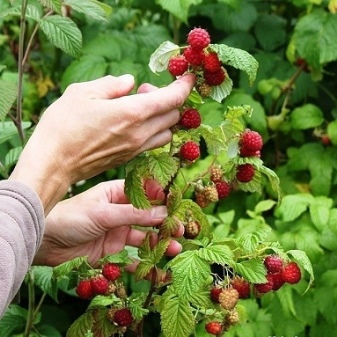

In this way, you can increase the number of branches that are actively bearing fruit. As a result, the volume of the harvest increases several times. This method has a number of advantages, among which the following are worth highlighting:
- increased yields;
- increasing the density of berries on the shoots;
- simple execution.
However, it should be borne in mind that Sobolev's technique is fraught with a number of disadvantages:
- overgrowth from roots;
- strong thickening of shrubs;
- high need for nutrient soil.
According to experienced gardeners, you should not use the double pruning method without carefully weighing all the points. It is important to take into account that Sobolev conducted his experiments on the territory of the Kurgan region, and the results were obtained taking into account the climate in this region. If you find an area in a different lane, cutting in this way may lead to a different outcome. It is also important to take into account the characteristics of the soil and the correct care for the bushes. This method can be used for certain varieties of raspberries. For example, it is not suitable for species that produce a lot of root growth. Pruning according to Sobolev will make the bush excessively thick. Over time, the replacement shoots will be suppressed by the root branches and the raspberries will weaken.
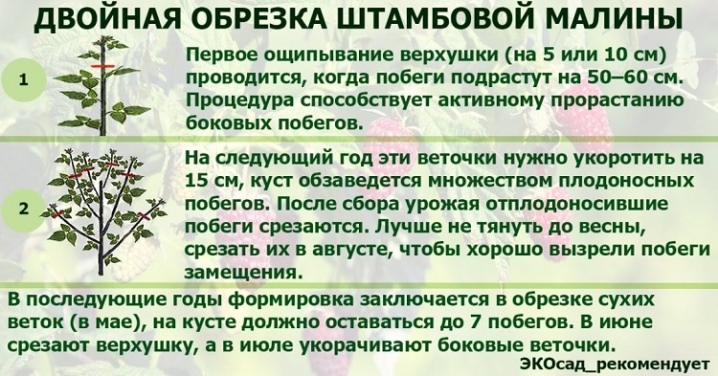
Step-by-step instructions for pruning
The double pruning technique is used for bushes that are actively bearing fruit. You cannot apply this method to those of them that are at the stage of growing shoots. The first stimulating pruning is allowed when the raspberry is three years old. To prune raspberries efficiently, you should follow the steps listed below.
- First you need to prune in the spring.... During it, you should remove branches that are frozen, dried or just old. Important: if part of the shoot is cut off, leave viable buds intact. Also during this period, you can dig up young growth. It is optimal if up to 30 branches remain on one square meter.
- In late spring - early summer, it is worth shortening branches that are one year old. The procedure is carried out for tall bushes, when the shoots reach a height of one meter, and for low-growing ones - 0.7 meters. The top should be trimmed by eight to ten centimeters, including the apical bud.
- Throughout the growing season, the raspberry bush is formed. In the course of this, annual branches build up lateral shoots up to half a meter long.
- In the fall, it is additionally necessary to remove all the growth that has formed, to the very root... In the event that it is planned to propagate the bush, then strong branches coming from the soil should be left. As for weak shoots, they must be removed.
- Re-pruning is carried out in the spring of next year, around the beginning of April.... This process assumes that the tops of the side branches will be shortened by ten to fifteen centimeters. This makes it possible to activate the formation of shoots on the sides of two-year-old branches. According to Sobolev, it is the second pruning that is very important so that the bush is covered with a large number of buds and ovaries.
- Also during this period, the removal of replacement shoots that formed in the last season should be carried out. Of their total, no more than six of the strongest branches must be left. For all the remaining ones, you need to cut off the tops with a kidney by eight to ten centimeters.
A productive pruning scheme allows the raspberry bushes to thrive. At the same time, the stems, covered with berries, become excessively heavy. Therefore, to facilitate the collection of fruits, branches should be tied to trellises. This is an important part of grooming.

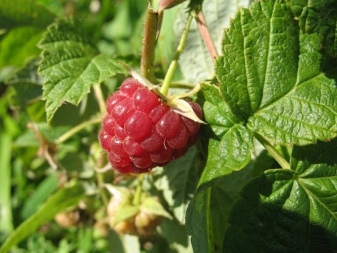
Features for prolonged fruiting
To extend the fruiting period of raspberries, pruning is done in a slightly different way. It is based on the shortening of shoots to different heights. As a result of this method, it turns out that at first the berries ripen on tall branches, then on medium ones, at the end - on short ones.
You can trim the tops on the shoots to the following lengths:
- 10 to 15 centimeters;
- from 20 to 30 centimeters;
- 0.5 part of the total length of the branch;
- leave 20 centimeters of shoot height above the surface.
For shortening, use a very sharp pruner or garden shears. Before this, the tool must disinfect... It is important to have time to spend pinch until the beginning of summer. Otherwise, the new side branches simply will not have time to bear fruit in time, and then they will be damaged by frost.

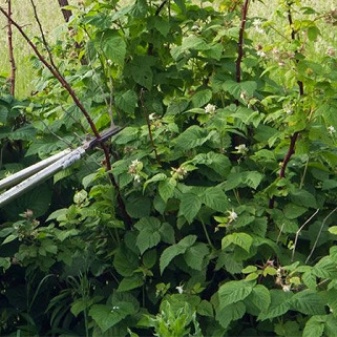
Follow-up care
The raspberry bush, after double pruning, gives a bountiful harvest, but for this it has to make a lot of effort. Therefore, it is very important to properly care for the culture.
- Water regularlyso that the soil around the bushes does not dry out.
- Weeding must be thorough and systematic.
- For mulching rotted manure (cow or horse) is best suited. After the fertilizer is laid out on the trunk circle, it is poured over with water. This creates a protective crust that simultaneously retains moisture and nourishes the plant. In the event that there is no manure, sawdust or peat can be used.
- It is important for raspberry bushes to provide a warm winter. To do this, it is necessary to bend the branches to the ground, secure with staples made of wood or metal, and then cover with agrofiber.
- Feed raspberry can be used using a tincture of poultry droppings. You can also add ash to it. To prepare the solution, pour three kilograms of droppings with six liters of water and leave for 24 hours. One liter of the resulting infusion is diluted with a bucket of water and a handful of ash is added. The resulting liquid is poured over the bushes.
- You can protect raspberries from harmful insects and diseases by spraying... For example, in the first spring month, a 1% solution of Bordeaux liquid does an excellent job with this task.
It is worth emphasizing that Sobolev recommends against using traditional loosening in raspberries. This is due to the fact that the root system of the plant is shallow, as a result of which it can be easily damaged.
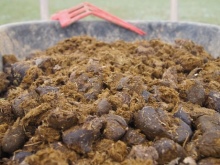
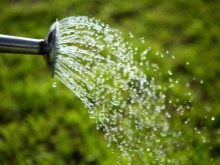
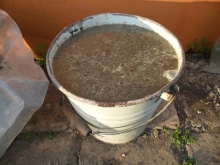









The comment was sent successfully.